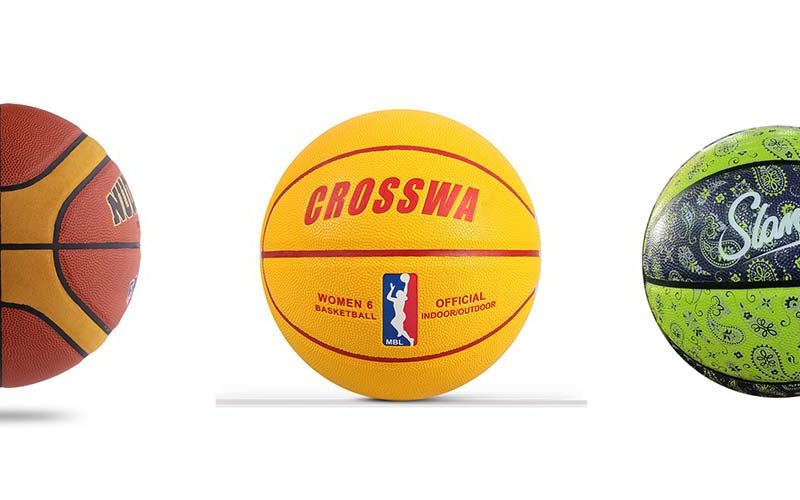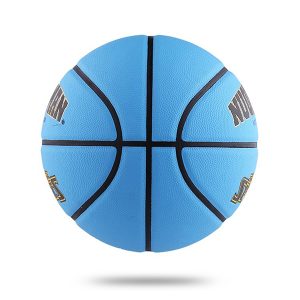
This article will explore the history of the rubber basketball, its construction, advantages, and disadvantages. We will also look at the factors to consider when choosing a basketball and how to take care of it to ensure its longevity.
History of Rubber Basketball
The history of basketball can be traced back to the late 19th century when Dr. James Naismith invented the game in Springfield, Massachusetts. The first basketballs were made of leather, and they were not very durable. As the game gained popularity, manufacturers started experimenting with different materials to make basketballs more durable and suitable for indoor and outdoor play.
The first rubber basketball was introduced in the 1940s. These balls were made of vulcanized rubber, which is a chemical process that strengthens the rubber and makes it more durable. Rubber basketballs were an instant hit, and they became the standard for recreational and school basketball games.
Construction of Rubber Basketball
Rubber basketballs are made of high-quality rubber materials that are specifically designed to withstand the impact of the game. They are typically made of two or three layers of rubber that are molded and stitched together. The outer layer of the ball is made of a durable rubber material that can withstand the wear and tear of the game. The inner layers are made of softer rubber materials that provide the ball’s bounce and grip.
Rubber basketballs come in different sizes, and the size of the ball depends on the age and gender of the players. The standard size for a basketball ball is 29.5 inches in circumference, but smaller sizes are available for younger players.
Advantages of Rubber Basketball
Rubber basketballs are the most popular type of basketball ball because of their affordability, durability, and versatility. Here are some advantages of using a rubber basketball:
- Affordable: Rubber basketballs are the most affordable type of basketball ball. They are cheaper than other materials like leather or synthetic leather, which makes them an ideal choice for schools, community centers, and recreational basketball games.
- Durable: Rubber basketballs are extremely durable and can withstand the wear and tear of outdoor and indoor play. They can also withstand the impact of the game without losing their shape or bounce.
- Versatile: Rubber basketballs are suitable for both indoor and outdoor play. They can be used on any surface, including concrete, asphalt, and hardwood floors.
- Grip: Rubber basketballs have a textured surface that provides a better grip, which makes them easier to handle and control.
- Maintenance: Rubber basketballs are low maintenance, and they do not require any special care. They can be cleaned easily with soap and water and dried with a towel.
Disadvantages of Rubber Basketball
Although rubber basketballs have many advantages, they also have some disadvantages. Here are some of the disadvantages of using a rubber basketball:
- Weight: Rubber basketballs are heavier than other materials like leather or synthetic leather. This can make them harder to handle and control, especially for younger players.
- Bounce: Rubber basketballs have a lower bounce than other materials like leather or synthetic leather. This can affect the game’s speed and accuracy and make it harder to shoot or pass the ball.
- Grip: While the textured surface of a rubber basketball provides a better grip, it can also make the ball slippery when it gets wet. This can affect the game’s performance, especially in outdoor play.
Factors to Consider When Choosing a Rubber Basketball
Choosing the right rubber basketball can make a big difference in your game. Here are some factors to consider when selecting a basketball:
- Size: Basketball balls come in different sizes, and the size of the ball depends on the age and gender of the players. Make sure to choose a ball that is the right size for the players.
- Texture: The texture of the ball affects the grip, and it is essential to choose a ball with a textured surface that provides a good grip.
- Bounce: The bounce of the ball affects the game’s speed and accuracy, and it is crucial to choose a ball with a consistent and predictable bounce.
- Durability: Rubber basketballs are durable, but some brands are more durable than others. Choose a ball that is made of high-quality rubber materials that can withstand the wear and tear of the game.
- Brand: There are many brands of rubber basketballs, and some are better than others. Choose a reputable brand that has a good reputation for making high-quality basketballs balls.
How to Take Care of Your Rubber Basketball
Taking care of your rubber basketball can ensure its longevity and keep it in good condition. Here are some tips on how to take care of your basketball ball:
- Keep it clean: Clean your basketball ball regularly with soap and water. Wipe it dry with a towel after cleaning.
- Store it properly: Store your basketball ball in a cool, dry place away from direct sunlight. Do not store it in a hot or humid environment.
- Inflate it correctly: Inflate your basketball ball to the recommended pressure level. Overinflating or underinflating the ball can affect its performance and durability.
- Avoid sharp objects: Do not use your basketball ball on rough surfaces, and avoid sharp objects that can damage the ball.
- Rotate it regularly: Rotating your basketball ball regularly can prevent wear and tear on one side of the ball and ensure its even wear.
Conclusion
Rubber basketballs are an excellent choice for recreational and school basketball games. They are affordable, durable, and versatile, making them a popular choice for players of all ages and skill levels. When choosing a rubber basketball, it is essential to consider factors like size, texture, bounce, durability, and brand. Taking care of your basketball ball can ensure its longevity and keep it in good condition for many games to come.

